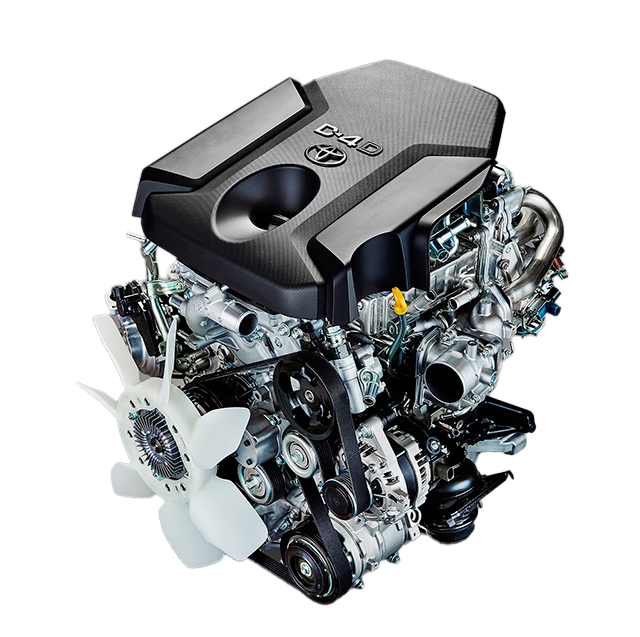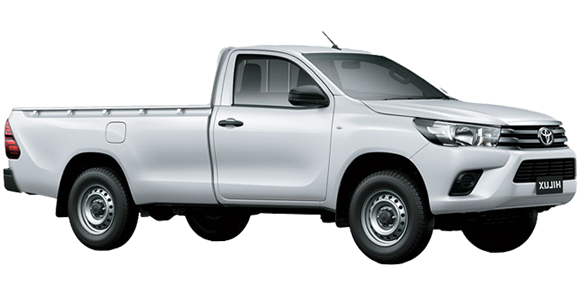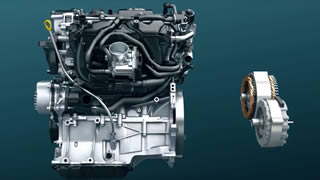Innovation

Fuel Efficiency
Computer control for a more efficient and powerful engine.
An intelligent computer optimises the engine's oxygen intake by varying the timing of the intake valves. The result is a more responsive car with
- Engine flexibility that reacts like a larger capacity engine
- More power at high engine speeds
- More torque in the lower speed ranges
- A more efficient engine with enhanced fuel economy and lower emissions.

DUAL VVT-I
The evolution of Toyota's engine technology, culminating in the ZR engines equipped with Dual VVT-i (Variable Valve Timing with intelligence), highlights the brand's continuous pursuit of fuel efficiency, performance, and environmental sustainability.
Variable Valve Timing (VVT) technology, particularly Dual VVT-i in the case of ZR engines, plays a pivotal role in optimizing engine performance and efficiency by precisely adjusting the timing of both intake and exhaust valves. By electronically controlling these valves, the engine can adapt to various operating conditions, ensuring optimal combustion and power delivery.
This level of control over the engine's valves enables the ZR engines to achieve high fuel efficiency while enhancing driving performance. By managing exhaust gases and intake air more efficiently, the engine can generate better torque, translating into improved power delivery to the wheels.
The transition from earlier engine generations, such as the E engines of the 1980s and the A-FE engines of the 1990s, to the latest NZ-E engines of the 2000s, underscores Toyota's commitment to innovation and refinement. Each iteration represents a step forward in terms of efficiency, performance, and environmental impact, with the ZR engines standing out as exemplars of fuel-efficient and environmentally friendly powertrains.
The incorporation of Dual VVT-i technology in the ZR engines not only aligns with Toyota's goal of producing appealing products that meet customer needs but also demonstrates its dedication to reducing the environmental footprint of its vehicles while providing an engaging driving experience.
GD Engines
The new engine series named as GD came out in 2015 replacing the KD engine series - the most widespread 4-cylinder diesel engines produced by Toyota. The 1GD-FTV engine became a replacement for its predecessor - the 3.0L 1KD-FTV engine. The new 2.8-liter diesel first was used in Toyota LandCruiser Prado and later in other Toyota's SUVs such as Toyota Fortuner and Toyota Hilux.
The 1GD-FTV has a traditional cast iron cylinder block without liners. Like the 1KD, the new engine also equipped with two counter-rotating balance shafts. The balancing unit is located in a separate housing under the engine block and driven by a chain from the crankshaft. Some engine versions (for example, in Toyota Hilux) don't have balancing unit for a cost reduction.
Features of the new GD engines:
- Next-generation advanced thermal insulation diesel combustion
- Compact high-efficiency variable geometry turbocharger (produced in-house by Toyota)
- Toyota-first urea selective catalyst reduction (SCR) system

Safety
Toyota's unwavering commitment to safety underscores its dedication to producing vehicles that prioritize the well-being of drivers, passengers, and pedestrians alike. Drawing from world-leading safety technologies, Toyota ensures that every vehicle in its lineup offers dependable safety features and performance.
Recognizing automotive safety as a paramount concern, Toyota invests significant resources into research and development to engineer vehicles that excel in safety and deliver comfortable driving experiences across diverse conditions. This dedication extends beyond meeting global vehicle safety standards to establishing exceedingly high internal targets, reflecting Toyota's commitment to setting industry benchmarks in safety.
A key aspect of Toyota's safety philosophy is its holistic approach, which encompasses both passive and active safety measures. Passive safety involves designing vehicles to mitigate injury and protect occupants in the event of a collision through features such as advanced airbag systems, crumple zones, and robust vehicle structures.
By integrating these cutting-edge safety technologies into its vehicles, Toyota not only meets the expectations of customers worldwide but also sets new standards for automotive safety. Whether it's through innovative safety features or comprehensive safety testing, Toyota's commitment to safety remains unwavering, ensuring that drivers and passengers can trust in the protection provided by their vehicles.



































